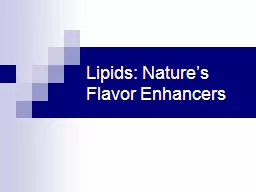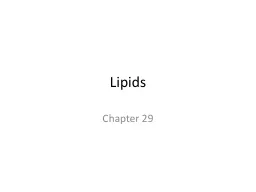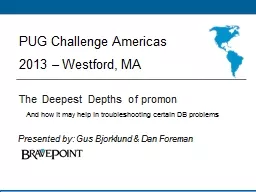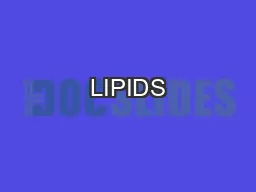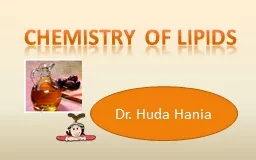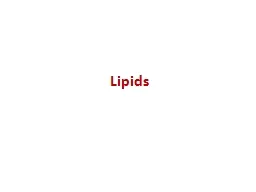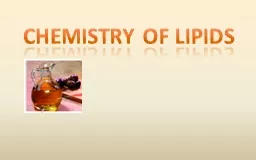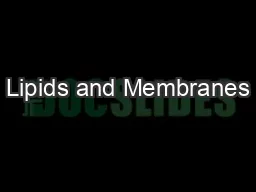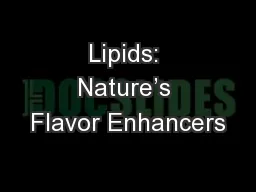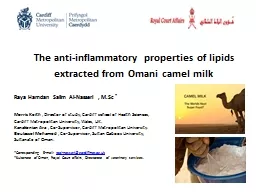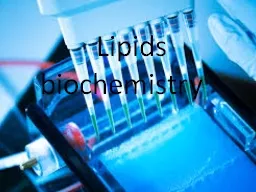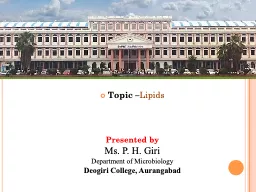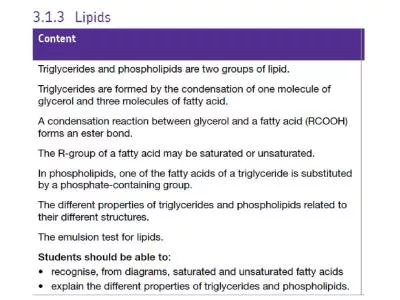PPT-Lipids: Nature’s Flavor Enhancers
Author : alida-meadow | Published Date : 2018-10-06
Lipids a category of organic compounds that are insoluble in water and have a greasy feel Pringles Calories Fat Saturated Fat Cost Regular Pringles 150 9 25 100
Presentation Embed Code
Download Presentation
Download Presentation The PPT/PDF document "Lipids: Nature’s Flavor Enhancers" is the property of its rightful owner. Permission is granted to download and print the materials on this website for personal, non-commercial use only, and to display it on your personal computer provided you do not modify the materials and that you retain all copyright notices contained in the materials. By downloading content from our website, you accept the terms of this agreement.
Lipids: Nature’s Flavor Enhancers: Transcript
Download Rules Of Document
"Lipids: Nature’s Flavor Enhancers"The content belongs to its owner. You may download and print it for personal use, without modification, and keep all copyright notices. By downloading, you agree to these terms.
Related Documents

